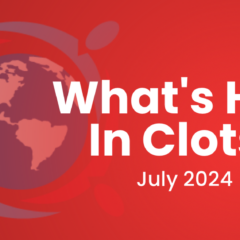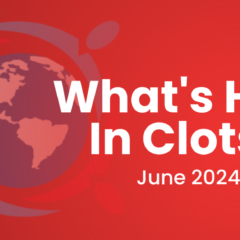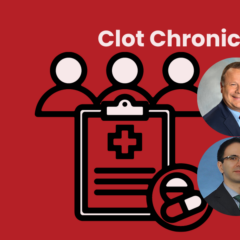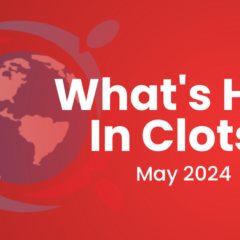Last updated on
EINSTEIN CHOICE Trial
Updated January 2020
Results from the EINSTEIN CHOICE study, published in the New England Journal of Medicine in 2017, revealed important information about extended anticoagulation treatment in patients with venous thromboembolism (VTE).
“The goal of the trial was to uncover the best form of extended VTE treatment by comparing different doses of rivaroxaban with aspirin,” explained Dr. Jeffrey Weitz, executive director of the Thrombosis & Atherosclerosis Research Institute and Professor of Medicine and Biochemistry at McMaster University..
“The issue is that many patients with VTE benefit from extended therapy, but the ideal form of extended therapy has been uncertain. Attempts to reduce bleeding have included using lower doses of anticoagulants or putting patients on aspirin,” Dr. Weitz continued. “What the EINSTEIN CHOICE study did for the first time is compare these strategies.”
Study design
The study was a multicenter, randomized, double-blind, event-driven, superiority study. Researchers worked with 3,365 VTE patients who received 6-12 months of anticoagulation after the VTE event. The trial compared two different doses of rivaroxaban (10 mg or 20 mg daily) with 100 mg of aspirin.
The results of the study were significant. “Both doses of rivaroxaban were superior to aspirin in preventing VTE recurrence and were associated with similar rates of bleeding,” Dr. Weitz concluded.
What do the results mean for patients?
EINSTEIN CHOICE was a significant trial that could change the way many clinicians think about extended VTE therapy or extended treatment with aspirin.
“This study showed us that we have more options for extended treatment. We can use full-dose rivaroxaban or a preventive dose and tailor the dose to the risk profile of the patient,” Dr. Weitz remarked. “Rivaroxaban at those doses is much more effective than aspirin and just as safe. Unless cost is an issue, there’s really little rationale in giving aspirin for secondary prevention because once-daily rivaroxaban is simple, safe, and more effective.”
“I think that, in general, the advent of DOACs has led physicians to treat more patients with extended anticoagulation because they offer a safe, simple approach,” he said. “Now with the EINSTEIN CHOICE results, I think it gives you more information and says that you’re better off with an anticoagulant than you are with aspirin, and now it gives you the choice of either the 20-mg dose or the 10-mg dose.”
Aspirin challenge
The aspirin arm of the EINSTEIN CHOICE trial presented a challenge for researchers. While it provided valuable data and was a major part of the trial, it caused certain participants to be ruled out. Patients who were on aspirin to treat a cardiovascular disease and patients who were at the highest risk of having a recurrent VTE were excluded from the study.
“The problem with having aspirin in the trial [was that] this led to the exclusion of the highest risk patients because their doctors may have feared them being placed on aspirin,” Dr. Weitz explained. These patients would have been negatively affected by being on the aspirin.
“That’s why I’m hesitant to say that all patients with VTE, who have been treated for 6-12 months might be eligible for the reduced dose,” he remarked, acknowledging certain gaps that the EINSTEIN CHOICE trial faced. “I think we had under-representation of the highest risk patients.”
Looking ahead
The EINSTEIN CHOICE trial may be completed, but its researchers plan on continuing their study through a trial extension. They’ll doing a deeper dive into extended anticoagulation in subgroups of VTE patients. Stay tuned!



